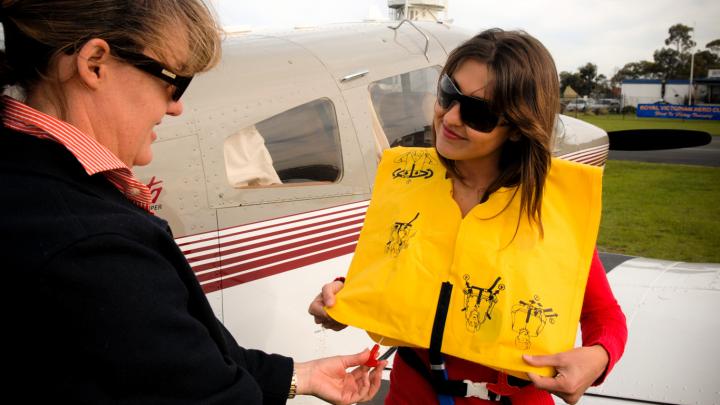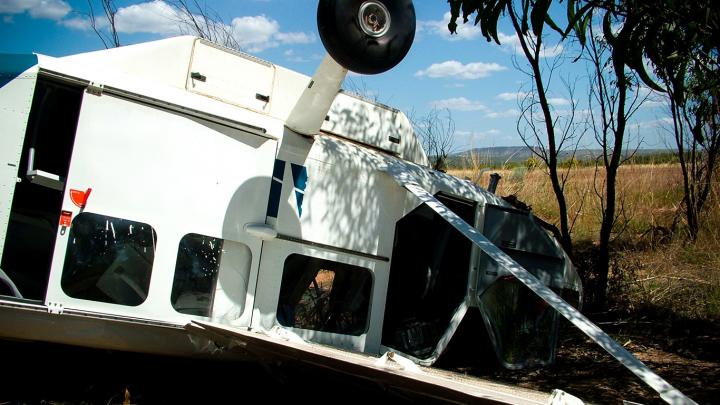Depending on the category and complexity of aircraft you fly, this list can vary.
Know the procedures for your own aircraft. If there's anything you don't understand, then ask an instructor to help you.
Forced landings
There's no better preparation for an emergency landing than recent practice. Make it a part of your everyday flying routine to:
- choose a safe location
- simulate an engine failure
- practise going through the recommended procedures.
This will help put you in the best position to land you and your aircraft safely on the ground.
Practice forced landings (PFLs) are an essential part of our pilot training, for good reason. Once you have attained your licence, it's vital you revisit those disciplines as often as possible.
The more you practise forced landings, the more readily those immediate vital actions will kick in. It will also appear less daunting and intimidating.
Panic is a very disabling reaction for a pilot. If you take the panic out of the real-life scenario, you are better equipped to carry out a successful emergency landing.
Even when you are cruising along in sunshine with a nice tailwind, get into the habit of looking at the terrain at regular intervals. Always assess what you'd do right now in the event of an engine failure.
Ask yourself:
- is there an airstrip around?
- where's the best paddock?
- what's the wind doing?
- is there a homestead or signs of civilization within gliding distance?
- do you have the most logical frequency on hand for an emergency radio call?
Instructors often make the same observation after taking students on a refresher PFL session.
Pilots can become so stressed about remembering the wording of MAYDAY calls and instructing passengers, they forget the main points:
- immediate actions
- best glide speed
- deciding on an achievable place to get the aircraft and passengers on the ground as safely as possible.
instructor helping with a lifejacket
Be aware that Airservices Australia does not monitor CTAFs frequency, 126.7. If you suffer an emergency, calling PAN or MAYDAY on these frequencies might result in no-one hearing you.
In class G airspace, you can only seek help from Airservices on the area frequency.
If you're looking down and seeing nothing but tiger country, it's a reminder to consider the geography of your route during your flight planning.
Next time, choose more friendly terrain to fly over in your planning. Often it won't add significant miles to your route. Think about the added safety margin you will enjoy rather than the couple of dollars of fuel it may cost you.
In a forced landing scenario always remember that it's not an exam. If you forget an emergency check, a MAYDAY call, or that passenger brief, then guess what? It's probably because you're applying all your attention to manoeuvring the aircraft towards a safe landing. That's a good thing.
At the end of the day, it's up to you to save lives. You need to get that done the best way you know how. Never underestimate the importance of just flying the aircraft.
Remember: Aviate, navigate, communicate. In that order.
Ditching
It's better to swat up on this one, rather than being in denial that it'll never happen to you.
If you don't have to fly over water, beyond gliding distance from a suitable landing place, then why do it?
Large stretches of water are invariably less scenic for your passengers anyway.
Your aircraft's Pilot Operating Handbook (POH) provides detailed handling information for the execution of a ditching.
Also read through:
It takes you through some solid advice on recommended procedures for ditching, including:
- impact the water as slowly as possible under full control; don't stall the aircraft in
- keep wings level in calm conditions, parallel with the surface of the water
- ditch into wind, thus slowing the aircraft down
- in more severe swell or breaking waves, ditch along the swell, not into the face of the wave.
- Refer to the list of resources at the end of this page for further information on general procedures for over water flights.
Aircraft crashed in grassland
ERSA
Never leave home without the current ERSA. It is your primary source as far as providing up to date information on hundreds of aerodromes around Australia.
The Emergency section at the back of the ERSA is an invaluable tool when your best laid plans are going awfully wrong in the cockpit.
Know what the ERSA contains. You will benefit from some bedtime reading on crucial topics such as:
- communication and NAVAID failure
- survival advice (desert, sea, jungle, cold)
- activation of ELT
- air search patterns
- ground/air emergency light signals
- first aid
- ADIZ procedures.



